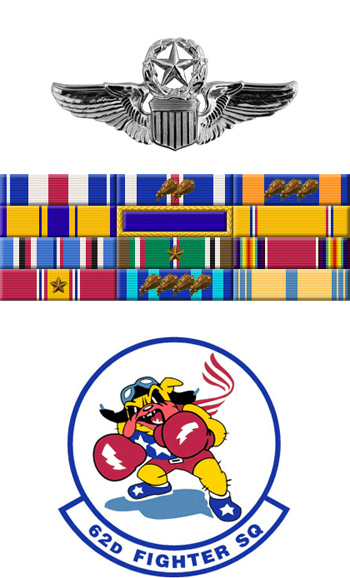
|
Eugene W. O'Neill, Jr. |
 |
|||
| Rank, Service | ||||
Colonel O-6, U.S. Air Force |
||||
| Veteran of: | ||||
|
||||
| Tribute: | ||||
Gene O'Neill was born on February 10, 1919, in Jersey City, New Jersey. He enlisted in the Aviation Cadet Program of the U.S. Army Air Corps on April 25, 1941, and was commissioned a 2d Lt and awarded his pilot wings at Victoria, Texas, on December 12, 1941. Lt O'Neill then joined the 62nd Pursuit Squadron of the 56th Pursuit Group (later renamed Fighter Squadron and Fighter Group) in December 1941, and deployed with the group to England flying the P-47 Thunderbolt in January 1943. He flew 87 combat missions and was credited with the destruction of 5 enemy aircraft in aerial combat before returning to the U.S. in April 1944. Capt O'Neill served as a staff officer with 1st Air Force and in the Pentagon until leaving active duty and joining the Air Force Reserve on May 7, 1947. He was recalled to active duty on January 10, 1951, and after completing Air Command and Staff School and Army Language School, he served as a Tactical Advisor to the Peruvian Air Force from August 1952 to April 1956. Col O'Neill served on the staff at Langley AFB, Virginia, from July 1956 to June 1961, and then served as commander of the 7135th School Group at Lindsey AS, West Germany, from June 1961 to September 1962. He was commander of the 7366th Combat Support Group at Chaumont AB, France, from November 1962 to August 1964, followed by service as commander of the 19th Combat Support Group at Homestead AFB, Florida, from September 1964 until his retirement from the Air Force on December 31, 1964. Col O'Neill wore Command Pilot Wings and accumulated over 4,000 flying hours during his Air Force career. Gene O'Neill died on August 30, 1998, and was buried at Arlington National Cemetery. |
||||
|
||||

